|
Research Archive
Impacts of logging on forests in Vietnam
We explored the impacts of logging on the carbon storage of natural forests in Vietnam. We determined the historical logging intensity using a combination of satellite images and interviews with local communities. We found that heavily logged forests stored only half the carbon of lightly logged forests. More details on this blog.
Stas et al., Forest Ecology and Management, 2020
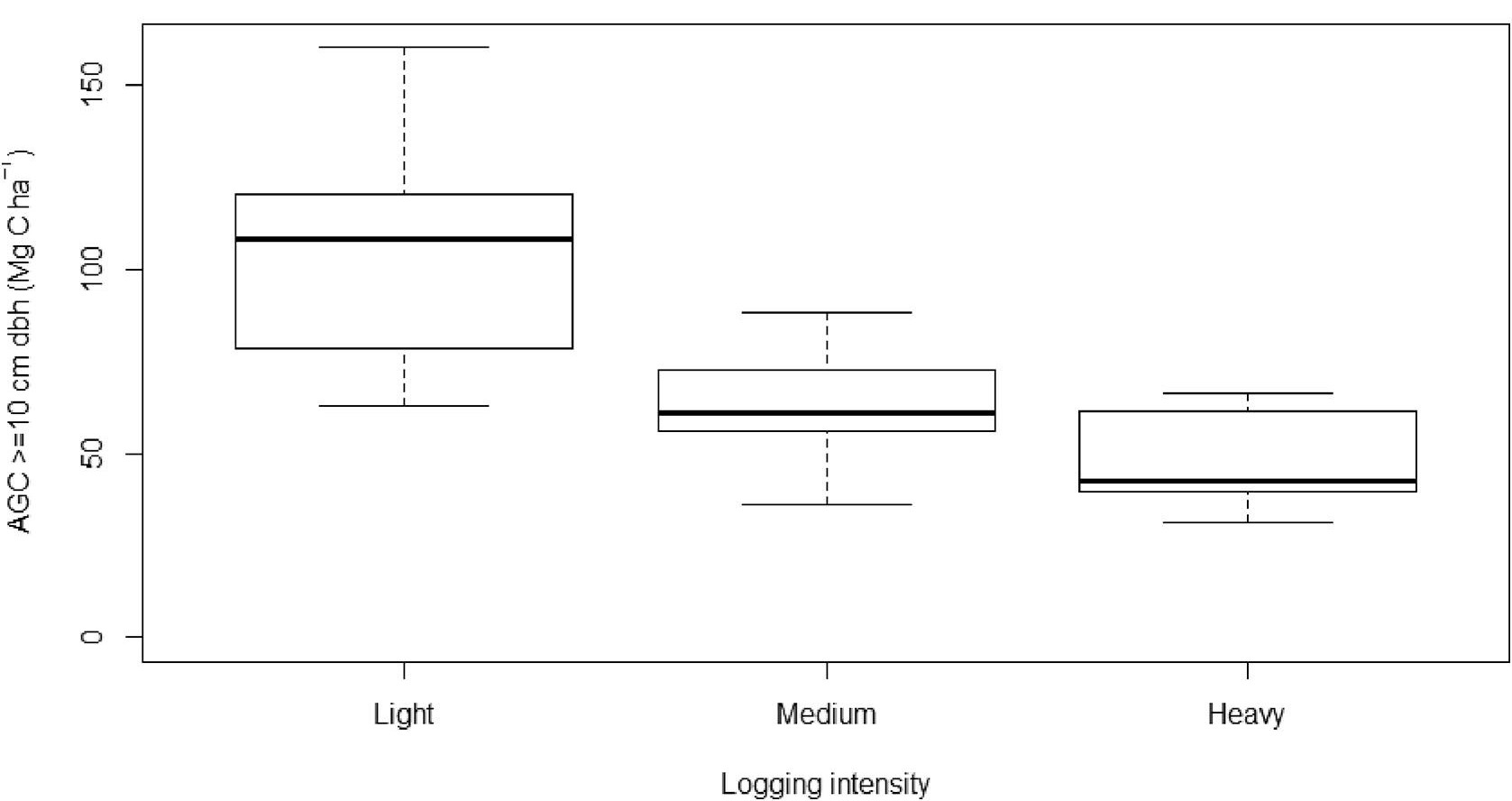
Residential energy use dominates air pollution in India
India has some of the worst air pollution on the planet, but little is known about the main sources of this pollution. We found that combustion of solid fuels (mostly wood and charcoal) for cooking and heating contribute 52% of particulate matter pollution in India.
Conibear et al., Nature Communications, 2018

Climate impacts of deforestation
Deforestation impacts the climate through changing land surface properties and altering the exchange of carbon dioxide and biogenic volatile organic compounds with the atmosphere. Biogenic voltile organic compounds react in the atmosphere altering the formation of ozone, methane and aerosol particles. We find that deforestation changes the concentrations of these species, reducing aerosol concentrations leading to a warming (aerosol DRF and IRF) and reducing O3 and CH4 leading to a cooling. Overall, we find that these changes to short lived climate forcers (SLCFs) results in a net warming impact on climate.
Scott et al., Nature Communications, 2018
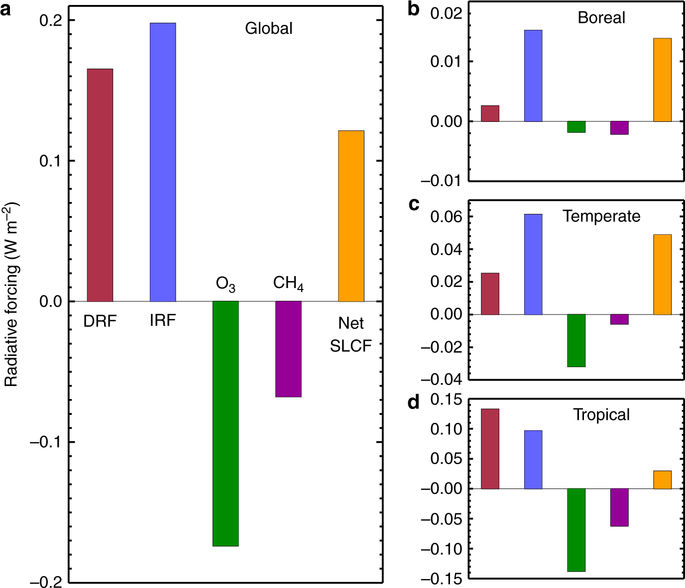
Natural aerosol climate feedbacks
We found a positive relationship between the observed (left panel) anomaly in aerosol number and local temperature anomaly, which was well reproduced by our model (right panel). We found that this relationship is partly caused by increased natural aerosol sources at warm temperatures. We used the model to show that natural aerosol is involved in important negative climate feedbacks.
Scott et al., Nature Geoscience, 2017

Changes in air pollution over the last 50 years
There have been large changes in air pollution over the last few decades. We used a coupled chemsitry-climate model to estimate the change in regional and global particulate pollution and associated disease burden over the past 50 years. We estimate that the number of deaths attributed to particulate air pollution has increased by 89-124% over the period 1960 to 2009.
Butt et al., Environ. Res. Lett., 2017
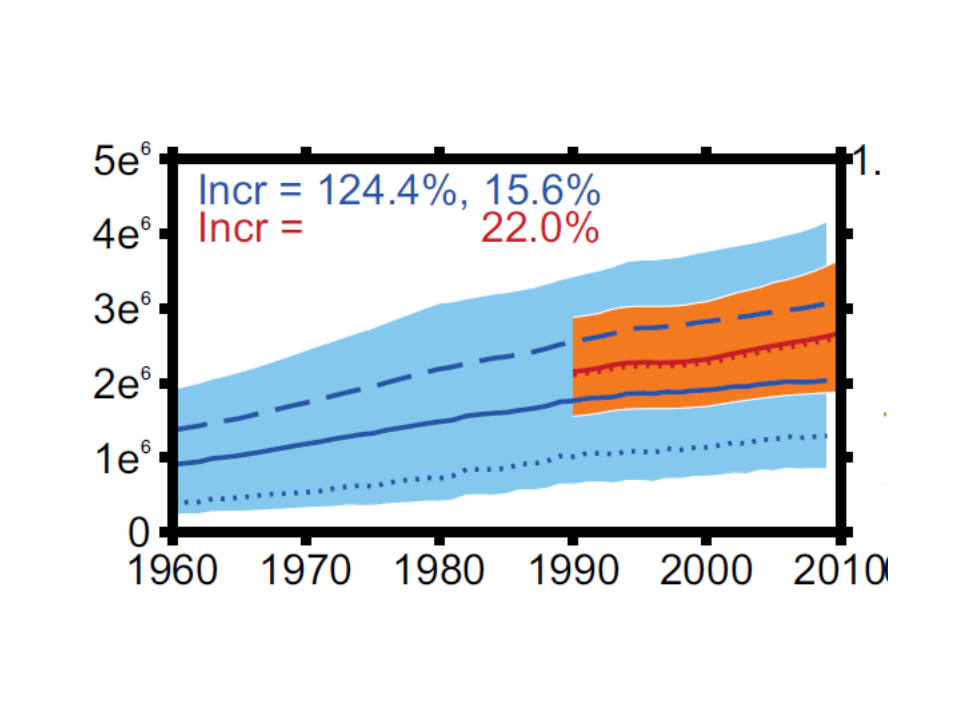
Variability in tree ring oxygen isotopes in the Amazon
Tree ring oxygen isotopes in Northern Bolivia correlate strongly with Amazon basin-wide rainfall. We use atmospheric back trajectories and satellite precipitation retrievals to show that rainout in the basin is the most important factor controlling oxygen isotopes. Our work suggests that tree ring oxygen isotopes can be reliably used to reconstruct Amazon basin rainfall.
Baker et al., Geophys. Res. Lett., 2016
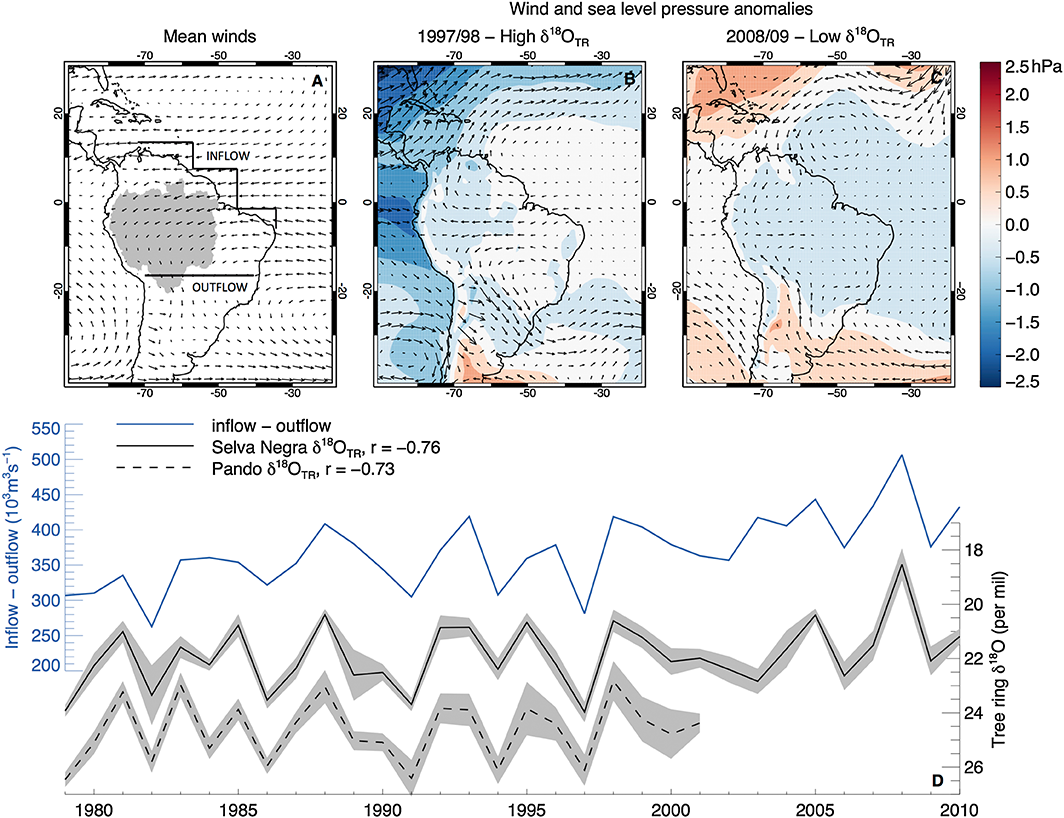
Impact of the 2015 Indonesian fires on air quality
In September to October 2015 Indonesia experienced the largest forest and peat fires for 3 decades. We used the WRF-chem air quality model to simulate the concentrations of fine particles (PM2.5) that occurred during this period, with mean concentrations as high as 1000 ug/m-3 (figure below). We find that 69 million people (25% of the population of Indonesia, Malaysia and Singapore) were exposed to very high concentrations of particulate pollution. We estimate that short-term exposure to this air pollution caused 11,880 (6,153–17,270) excess mortalities during September and October.
Crippa et al., Scientific Reports, 2016
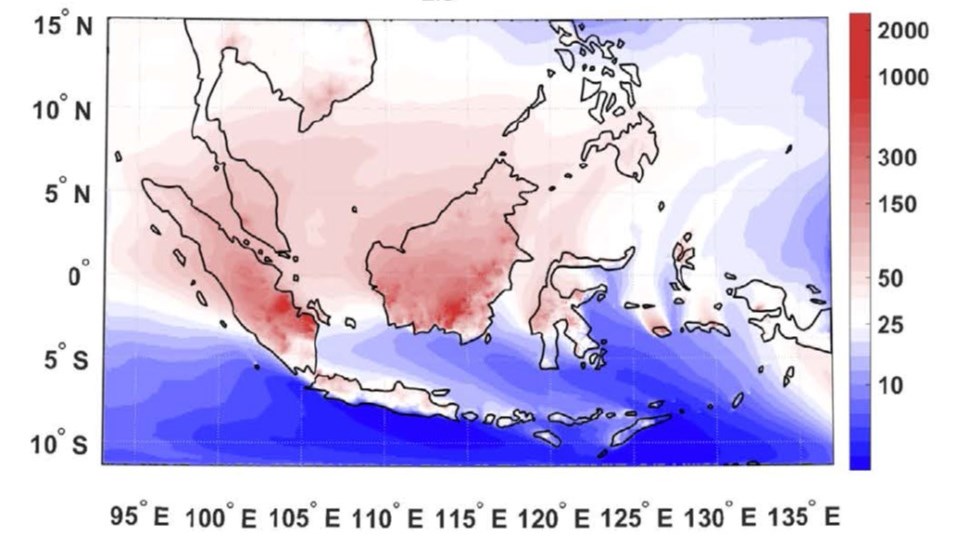
How effective has European legislation been in improving air quality?
We used a coupled composition-climate model to simulate the impacts of European air quality legislation and technology measures implemented between 1970 and 2010. We estimate that emission reductions associated with legislation and technology measures decreased simulated European annual mean concentrations of fine particulate matter (PM2.5) by 35%. We estimate the reduction in PM2.5 concentrations due to these emission reductions is preventing 80 000 premature deaths annually across the European Union.
Turnock et al., Environ. Res. Lett., 2016
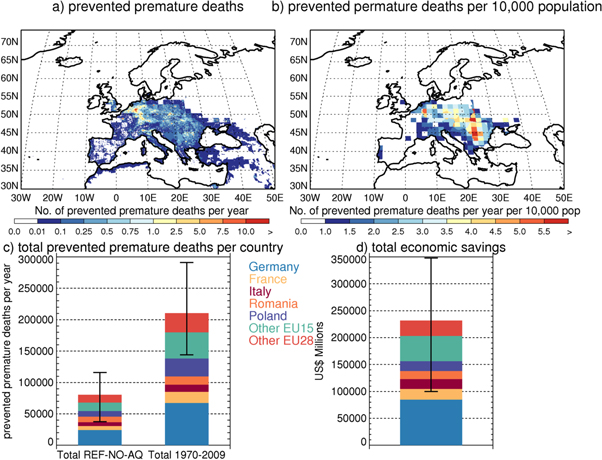
How effective are protected areas at preventing deforestation?
We use high resolution data on forest loss to assess whether tropical forest protected areas prevent deforestation. The figure shows national median performance of protected areas, calculated as forest loss within the protected areas compared to forest loss outside. A lower value indicates a country with better protected areas. We find protected areas do slow deforestation but with very variable performance. Some countries have very effective protected areas (Australia, South Africa, Mexico, Panama, Belize, Costa Rica, Thailand, Brazil, Laos) whereas in other countries protected areas do little to prevent forest loss (China, India, Myanmar, Indonesia, Malaysia, Ecuador, Honduras, Venezuela). Our analysis confirms that "paper parks" do exist in many countries and highlights the urgent need for better management of protected areas.
Spracklen et al., Plos One, 2015
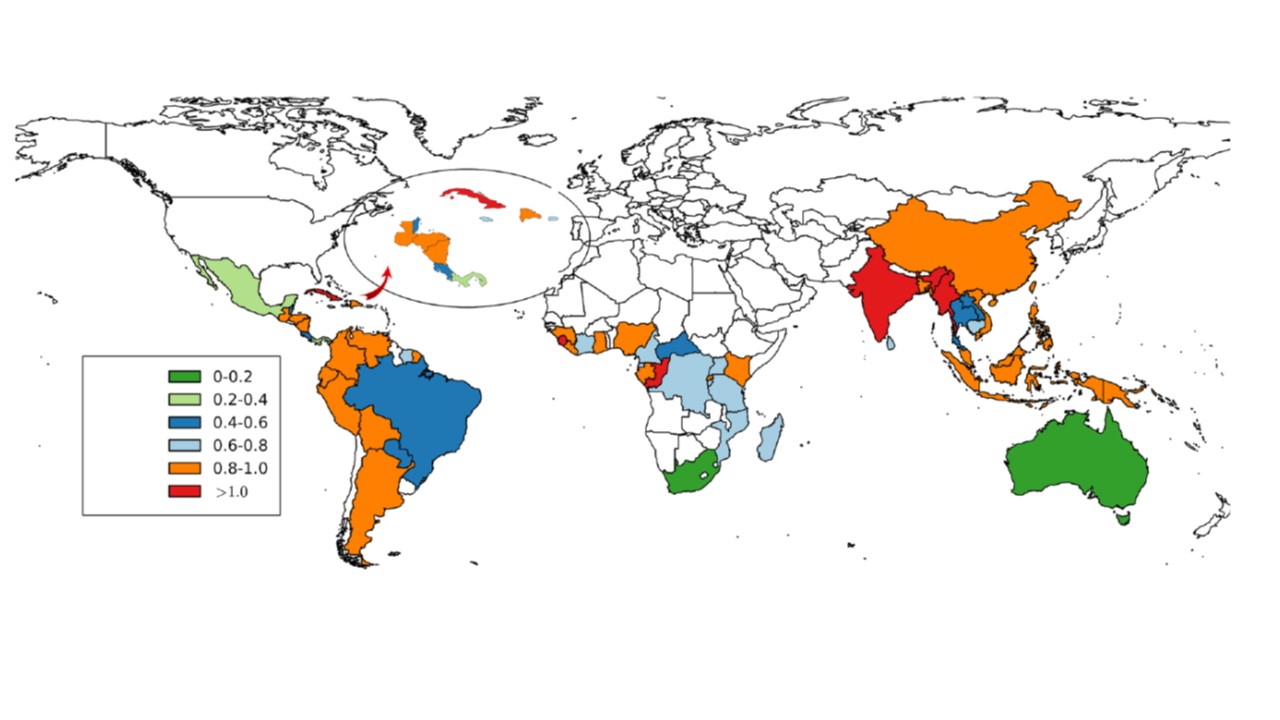
Deforestation and rainfall in the Amazon
We show that climate models simulate a robust reduction in Amazon basin rainfall in response to large-scale deforestation. We find that business-as-usual deforestation (assuming continuation of deforestation rates prior to 2004) would result in an 8% reduction in annual mean rainfall across the Amazon basin.
Spracklen & Garcia-Carreras, Geophysical Research Letters, 2015

Reduced deforestation, air quality and human health in Brazil
Brazil has achieved large reductions in deforestation rate over the last decade. We combined observations of deforestataion rate with MODIS observations of aerosol optical depth (AOD) to show that years with high deforestation have greater regional AOD. We used an aerosol model to estimate that the reduction in deforestation rate is saving 400 to 1700 lives in South America each year through improved air quality.
Reddington et al., Nature Geoscience, 2015

Trends in aerosol over Europe from 1960 to 2009
Turnock et al., ACP, 2015
There have been large changes in emissions of aerosol over Europe over the past five decades. We used a coupled chemistry climate model to simulate changes in aerosol over Europe over this period.
Peak aerosol concentrations occurred around 1970, with large reductions in aerosol since then. This has led to a positive radiative forcing over Europe, which has likely contributed to increased temperatures over Europe.
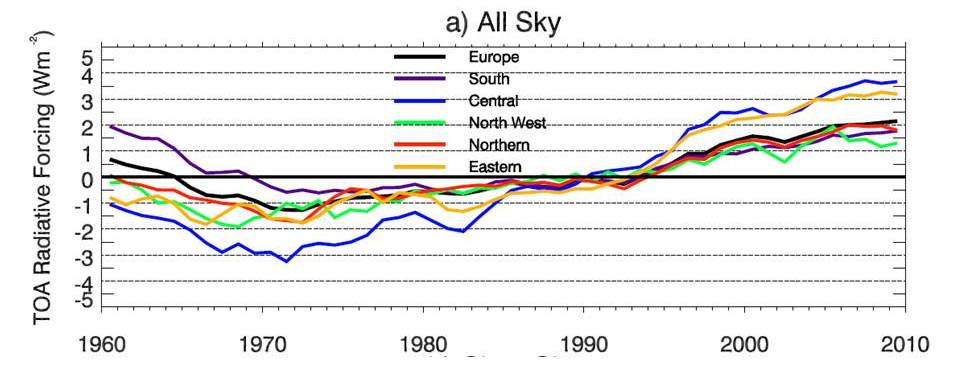
Amazon fires, smoke haze and forest carbon uptake
Rap et al., Geophys. Res. Lett., 2015
The smoky haze caused by fires scatters sunlight, increasing the amount of diffuse sunlight reaching the surface. Plant photosynthesis increasies under diffuse sunlight with impacts on carbon uptake of forests. We found that increased diffuse radiation due to forest fires in the Amazon causes surrounding forests to increase net primary productivity equivalent to 33-65% of carbon emissions from the fires.
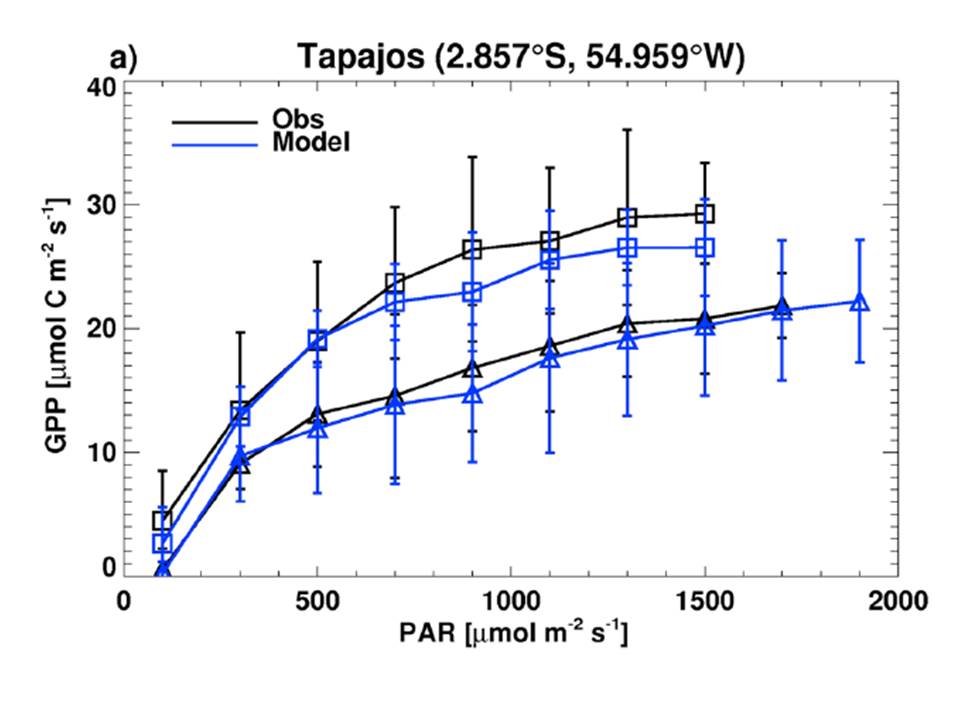
Land Use Change Impacts on Air Quality and Climate
Heald & Spracklen, Chem. Rev., 2015
Land use change alters the fluxes of trace gases between the surface and atmosphere with impacts on atmospheric composition and the Earth's climate. We found that historical land use change has led to substantial changes to ozone, biogenic secondary organic aerosol, nitrate, dust and smoke aerosol. The overall impact of these changes is likely a net cooling impact on climate.

Occurrence of pristine aerosol environments on a polluted planet
Hamilton et al., PNAS, 2014
We used a global aerosol model to explore where aerosol concentrations in the present day atmmosphere are similar to those in the pre-industrial. We found "pristine" aerosol concentrations across 12% of the Earth's surface. Pristine regions were mostly oceanic with only 2% of the Earth's land surface experiencing pristine aerosol.
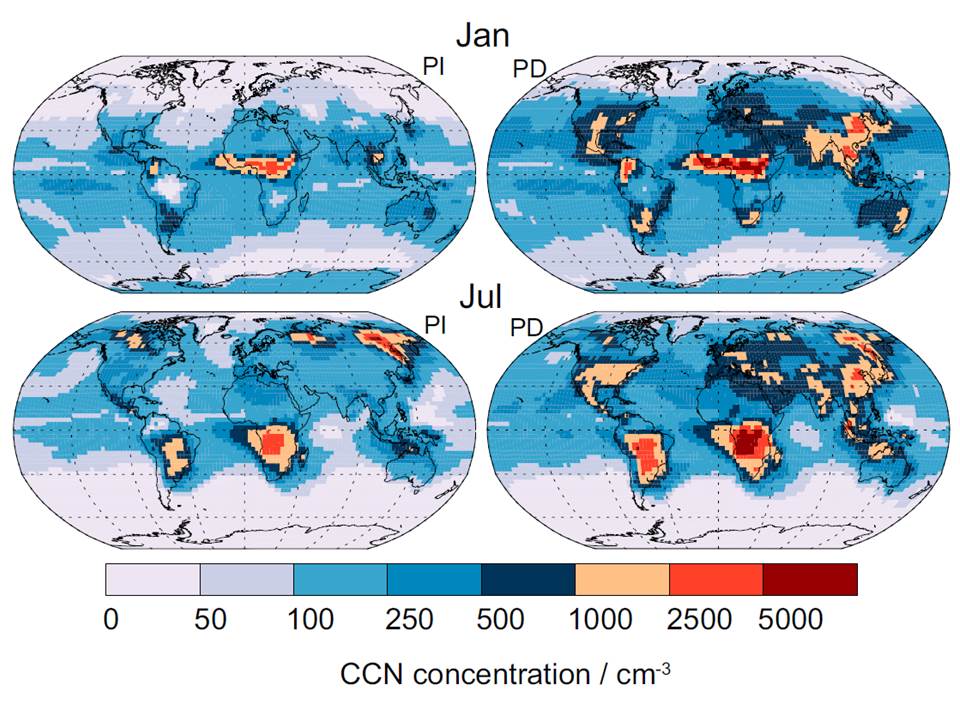
Contribution of vegetation and peat fires to particulate air pollution in Southeast Asia
Reddington et al 2014 Environ. Res. Lett., 2014
Fires are used extensively across the tropics to clear forests and vegetation. Smoke from these fires causes poor air quality and has negative impacts on human health. We identified the locations of fires that are degrading air quality in Singapore.
Fires in South and Central Sumatra and South Kalimantan contribute the most to poor air quality in Singapore (see figure). Action to prevent fires in these regions would have the most benefit to air quality in Singapore.
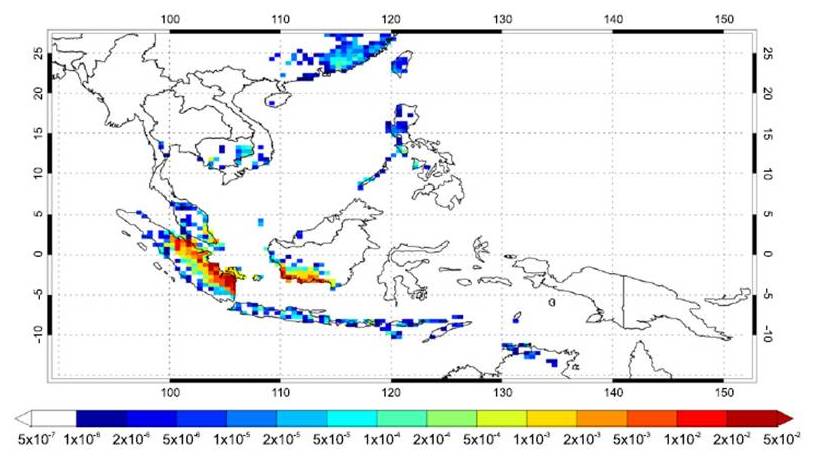
More details and a video abstract available here.
Tropical Mountain Forests an Important Global Store of Carbon
Spracklen and Righelato., Biogeosciences, 11, 2741-2751, 2014
Using high resolution data of elevation in combination with satellite data of forest cover, we showed that more than 75% of tropical mountain forests are on hill sides with slopes angles greater than 27o. The prevalence of steep hill sides in mountain forests means that the global area of tropical mountain forests is 40% greater than the area reported on maps. This means that tropical mountain forests are more important stores of carbon than previously thought. The figure shows the ratio of land surface area to planimetric area across the world's tropical forests.
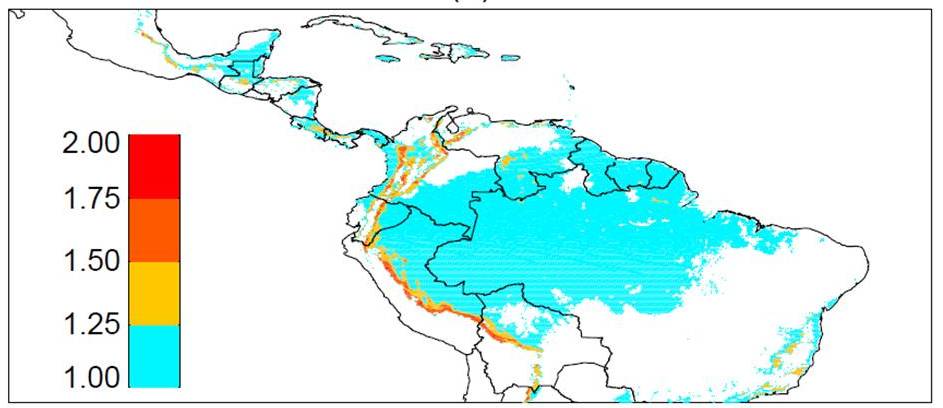
Our paper was reported in Mongabay.
Climate impact of biogenic SOA
Scott et el., Atmos. Chem. Phys., 14, 447-470, 2014
Biogenic secondary organic aerosol (SOA) has a radiative effect that is similar in magnitude to that of anthropogenic aerosol
or other natural aerosol sources.
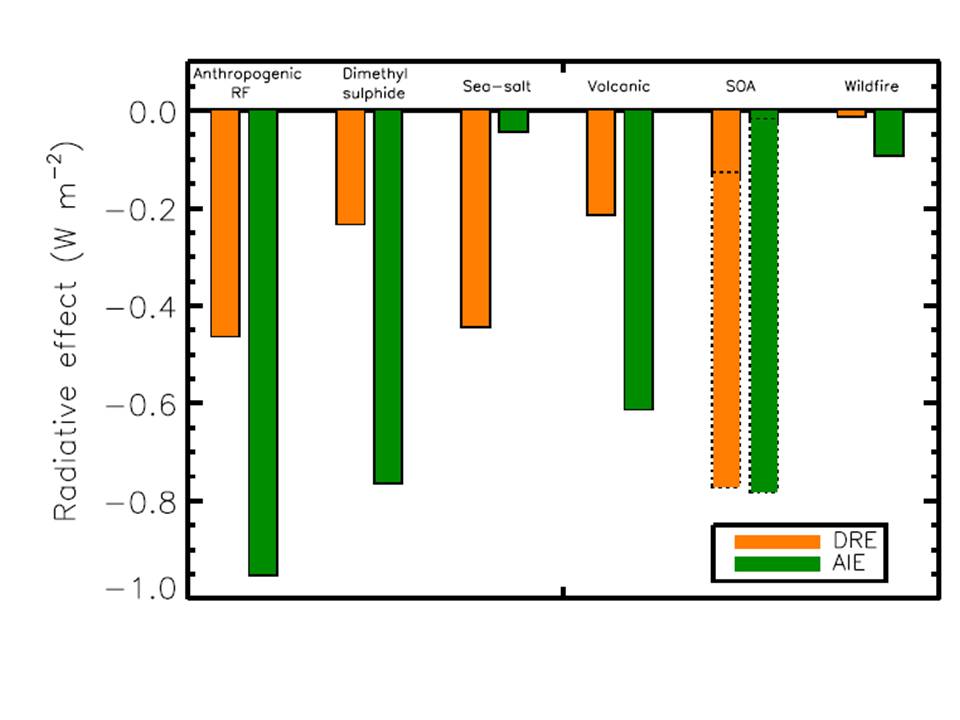
|